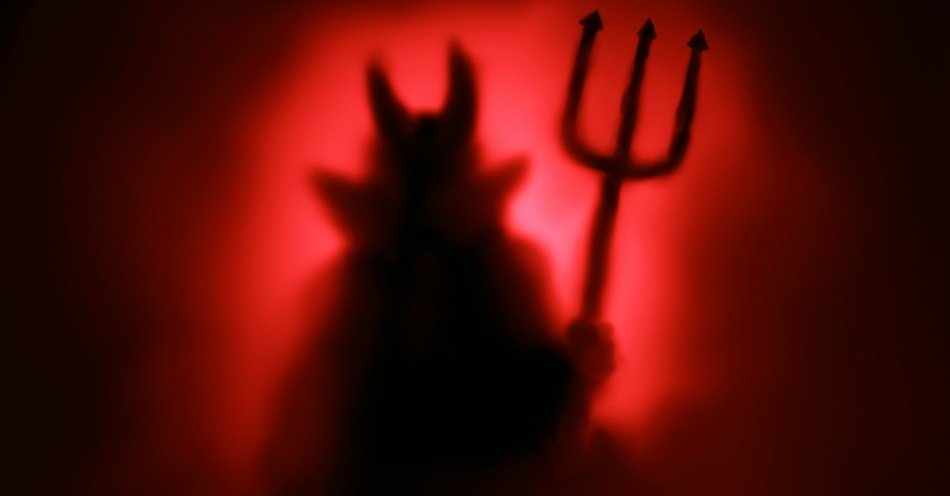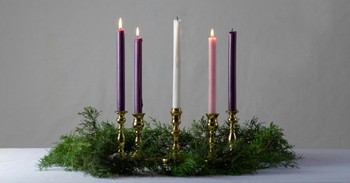People in Western culture have explored more pre-Christian and pagan beliefs, including certain pagan figures adopted or adapted by Christianity. In this search through history, Krampus has caught more attention in recent years.
From horror to comedy, movies and shows have mocked or brought new life to the ancient character, Krampus. This could be due to the figure’s connection to the biggest holiday in the West, Christmas. The celebration surrounding the birth of Jesus has incorporated several cultural elements from Europe over the centuries, including the figure of Krampus. But who is Krampus and what should Christians today know about him?
What is the History and Development of Krampus?
Krampus is known as the dark and punishing counterpart to Santa Claus. He appears as a horned, devil-type creature with chains, hooves, and a long tongue. He punished the naughty children during the Christmas season, especially on December 5th, known as Krampusnacht, or Krampus Night.
Krampus probably began in pre-Christian Alpine traditions. Connected to winter, he represented the darker and dangerous aspects of nature. In these pagan traditions, he symbolized the wild forces of the cold season, a forest and mountain spirit. Krampus was born from the fears tied to the harsh winters. Early myths suggest Krampus acted as a type of winter demon, believed to travel the mountains and forests, punishing those who misbehaved. Ancient folktales often developed myths and figures to scare children into obedience or to warn them from dangerous activities.
As Christianity spread in the region, Krampus’ image changed. Church leaders first tried to suppress his influence in the medieval period. They associated him with the devil since he had horns and cloven hooves. Despite the church’s efforts, his myth became mixed with Christian celebrations, especially in German-speaking areas. By the 1600s, Krampus had a place in St. Nicholas Day festivities on December 5th, also known as Krampus Night. While Santa Claus rewarded good children with treats or gifts, Krampus became a malicious opposite, punishing the bad kids. During Krampusnacht, young men would dress up as Krampus with terrifying masks and parade through town with sticks to scare people.
By the early 20th century, Krampus’ image softened, probably because Christmas cards started including him. These postcards, called “Krampuskarten,” showed Krampus in more comical ways instead of horrifying. Sometimes, he played pranks or chased children with mischief rather than hurt them. The humorous Krampus spread, giving him a wider appeal. When Austria banned Krampus celebrations after WWI to be more kid-friendly, it backfired. Public fascination only grew.
Today, Krampus symbolizes the winter season’s darker folklore. In Austria, Germany, and even in parts of the U.S., Krampus parades celebrate his role.
What is the Meaning behind Krampus?
Like the more traditional idea of St. Nicholas, Krampus teaches the concept of reward and punishment, showing children that misbehavior has consequences. Krampus scares children into following family and community expectations of good behavior.
Krampus reveals the Christmas season isn’t all warmth and kindness. Darkness also exists. He serves as a warning that actions have repercussions and choices matter. In the ancient world, evil and supernatural beings also conveyed moral lessons. His chains can be interpreted as bondage to bad decisions, and the birch rod he carries reminds children of the switch parents might use for spankings.
Like many cultures, the Germanic tribes marked the changing seasons with festivals and symbolism. Europe experiences extreme seasons, and winter could bring sickness, starvation, or even death if not properly prepared. Krampus represents the darker side of these changes. In winter, the communities needed discipline and cooperation to survive. The Krampus message is clear: Failing to prepare and contribute can have deadly consequences.
Krampus teaches a necessary balance. While kindness and goodwill should be celebrated, people must also recognize the results of the darker side of human nature.
What Explains the Modern Resurgence for Krampus?
One reason for Krampus’s popularity is the new interest in folklore and mythology. Many people today explore older stories and legends that reconnect them with cultural roots, especially the darker side of traditional celebrations. Krampus’ devilish image and role as a punisher of bad behavior offer a thrilling contrast to the sweet images of Christmas. More and more people seem to be drawn to the mystery and depth of the holiday with Krampus.
In addition, Krampus offers a balance to the modern holiday consumerism. Western Christmas focuses on gift-giving and cheer, many times without reflecting on deeper significance. Krampus reminds people about humility and personal accountability. The world can be dark and disturbing at times, and Krampus shows individuals don’t have to pretend the scary parts of humanity don’t exist.
Krampus’s resurgence owes a great deal to popular media. Movies, books, and even events have brought Krampus back into the mainstream. Films like Krampus (2015) brought him into American households. Social media has amplified this effect, and images and stories spread online. In the Krampuslauf (Krampus run) in Austria and Germany, participants dress as Krampus and other scary creatures in a parade.
In a world of escapism, Krampus invites us to have a more realistic perspective, embracing how holidays can have both joy and fright.
What Bible Verses Connect to the Krampus Figure?
The Bible teaches that our actions have results, both in this life and the next. God speaks of those frightening consequences from his love, to keep us from experiencing them.
Paul writes in Romans 6:23, “For the wages of sin is death, but the gift of God is eternal life in Christ Jesus our Lord.” Sin leads to death, even the terror of hell, while the Lord offers a path to life and redemption. Krampus isn’t a symbol of divine justice, but his role points to the punishment waiting those who live in disobedience, as the Bible teaches. Wrong actions lead to unwanted outcomes unless we turn to God for forgiveness.
Since Christianity also includes a counter to God, the Devil, it makes sense that Christianity would adopt Krampus as the opposite of St. Nicholas. Just as Santa Claus rewards the good and Krampus punishes the bad, the Bible shows how God rewards righteousness but allows consequences for sin. “For the Lord loves justice; he will not forsake his faithful ones. The righteous shall be kept safe forever, but the children of the wicked shall be cut off.” God loves justice, and divine justice is a part of his character and role as supreme judge.
Krampus’s image during a season of joy expresses how Christians must remain vigilant against the Devil and evil. The apostle Peter warns us, “Be sober-minded; be watchful. Your adversary the devil prowls around like a roaring lion, seeking someone to devour.” Krampus isn’t Satan, but his dark role teaches believers about the spiritual warfare going on in the heavens for the souls of people. We shouldn’t allow the cheer of a consumeristic season to distract us from spiritual diligence.
While we may not discipline children as harshly or with fear as they did in the ancient world, parents should discipline their children, teaching them what is right and wrong out of love. Discipline means correction and passing on wisdom. In Alpine folklore, Krampus warns children to make wise choices.
What Can Christians Learn from Krampus?
We can learn several lessons from the Krampus folklore. Though not a biblical figure, his role as punisher of misbehavior teaches us how actions have repercussions, in this life and eternity. The Bible teaches that every decision has an impact and that we will reap what we sow in this life. “Do not be deceived: God is not mocked, for whatever one sows, that will he also reap” (Galatians 6:7). God’s standards aren’t random rules but boundaries intended for our good and the well-being of those around us.
However, thank God he didn’t leave us to moral standards alone. Trying to live right solely by focusing on morality, rewards, or punishments leads us to rely on our own strength. Good behavior matters, but morality alone can’t sustain us. Legalism brings death, the lesson of choosing the Tree of the Knowledge of Good and Evil. Romans 3:23 tells us, “for all have sinned and fall short of the glory of God.” This applies to all, not some, and seems hopeless. When we rely on our ability to stay righteous, we find ourselves in a great struggle. God’s law reveals the standard and also our inability to meet it without his help.
Praise God, he offers what we can’t achieve on our own—forgiveness, redemption, and grace. 1 John 1:9 tells us, “If we confess our sins, he is faithful and just to forgive us our sins and to cleanse us from all unrighteousness.” God’s Spirit empowers us to live righteously and not fear punishment. Through the Spirit, we possess the strength to walk holy out of love from God, not fear. Krampus may remind us of the consequences, but God gives justice and mercy. And mercy triumphs over judgment, giving us the peace and grace to live a life that honors him.
Peace.
Photo Credit: ©iStock/Getty Images Plus/CasPhotography





.jpg)